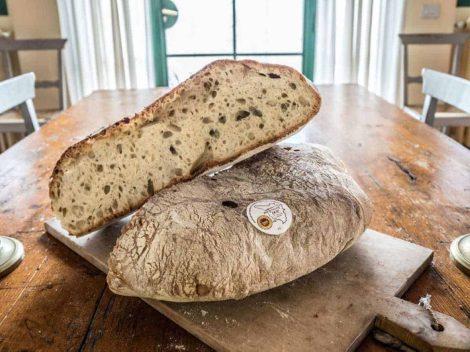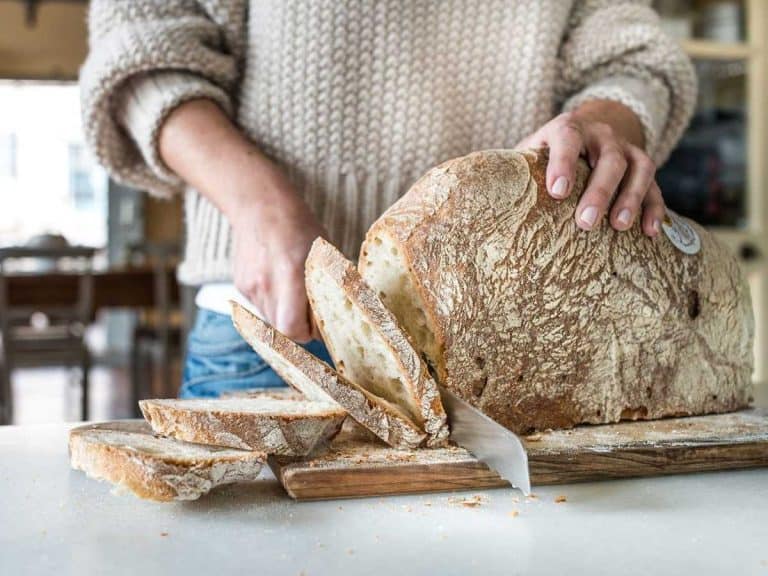In every respectable Tuscan bakery, you will find Tuscan Bread, the "saltless" one, ideal for accompanying the "toasty" flavors of the local cuisine. In 2016, it also obtained PDO recognition: the official recipe calls for soft wheat flour containing wheat germ, water, natural yeast, and, of course, is totally salt-free.
Why saltless bread?
Tuscany is not the only region where saltless bread is common; it is often found in bakeries in central Italy, from Umbria to the Marche to Viterbo, but Tuscan saltless bread is perhaps the most famous, with an annual production of 950 thousand kilograms and a consumption value of 3.3 million euros (Ismea-Qualivita Report 2021). The first existential question: why is it saltless? "The reasons are historical: Pisa in the Middle Ages was one of the four maritime republics and managed all the trade that went to other cities inland, including salt, which at a certain point began to be heavily taxed. So Florence decided to no longer pay the salt tax, and from there, the custom of making saltless bread spread," explains Daniele Pardini, director of the Tuscan Bread PDO Protection Consortium, which collected numerous historical sources to obtain the designation of origin.
Dante wrote in the Divine Comedy's 17th canto: 'You will experience how salty is another's bread.' But there are numerous written testimonies. The Consortium's well-made website reads: "Another testimony is provided in the 16th century by Pierandrea Mattioli, and a writing from 1765 by Saverio Manetti reports information about the Tuscan custom of not using salt during the preparation of this particular type of bread. Manetti also refers to the use of natural yeast, called 'formento' in Tuscany, consisting of sourdough that was kept in the so-called 'madia' among the flour. There are also testimonies about the centrality, in the diet of Tuscan sharecroppers in the 19th century, of bread prepared without salt. In the 20th century, Giuseppe Negri, in one of his writings praising the efforts of the baker, refers to the 'tasteless Tuscan loaf.' Negri is followed by other writers, all agreeing on the goodness and peculiarity of this 'saltless' bread, with a crunchy crust and a soft but consistent crumb."

How is saltless bread made?
Water, soft wheat flour of type 0, 1, or 2, and mother yeast created by crossing three mother pastes from three different bakeries (Capecchi, Giuntini, and Domenici). These are the ingredients allowed by the production specification that delimits the production area of soft wheat - "The production and packaging area of Tuscan Bread PDO includes the entire administrative territory of the Tuscany Region" - and requires the presence of wheat germ in the flour: "The presence of wheat germ, which now seems to be totally absent in the flours of generic breads, not only has positive effects on nutritional characteristics but also influences the leavening processes, in relation to its richness in enzymes that intervene in the degradation processes of complex sugars."
For those who don't know, the wheat grain or kernel is formed by three distinct zones: bran, endosperm, and germ, which is the reproductive organ of the grain as well as the richest part in fats, proteins, and vitamins. That's why more and more mills, even industrial ones, are pushing for flours containing the precious germ, which must be previously "stabilized," that is, roasted so that it does not become rancid (due to its high fat content), and roasted well so that it brings with it all its vitamins and proteins.

Now the question of questions: is saltless bread a direct consequence of Tuscan cuisine? "I would say vice versa," ventures Daniele Pardini, "there are numerous historical sources confirming the decisive role that Tuscan Bread has had in characterizing and succeeding in Tuscan cuisine. This is also confirmed by the fact that the production of this bread has continued through the centuries to the present day, constituting an undisputed and exclusive historical and cultural heritage of the Tuscan territory." Actually, according to what Massimo Montanare writes in "The Italian Identity in Cuisine" - "What we call regional cuisines today is a modern construction" - it seems that saltless bread was born before Tuscan cuisine.


 Wine promotion, vineyard uprooting, and support for dealcoholised wines: the European Commission's historic compromise on viticulture
Wine promotion, vineyard uprooting, and support for dealcoholised wines: the European Commission's historic compromise on viticulture A small Sicilian farmer with 40 cows wins silver at the World Cheese Awards
A small Sicilian farmer with 40 cows wins silver at the World Cheese Awards Women are the best sommeliers. Here are the scientific studies
Women are the best sommeliers. Here are the scientific studies Where to eat at a farm stay in Sicily: the best addresses in the Provinces of Trapani, Palermo, and Agrigento
Where to eat at a farm stay in Sicily: the best addresses in the Provinces of Trapani, Palermo, and Agrigento Wine in cans, bottle-fermented, and alcohol free: the unstoppable change in Gen Z’s tastes
Wine in cans, bottle-fermented, and alcohol free: the unstoppable change in Gen Z’s tastes






